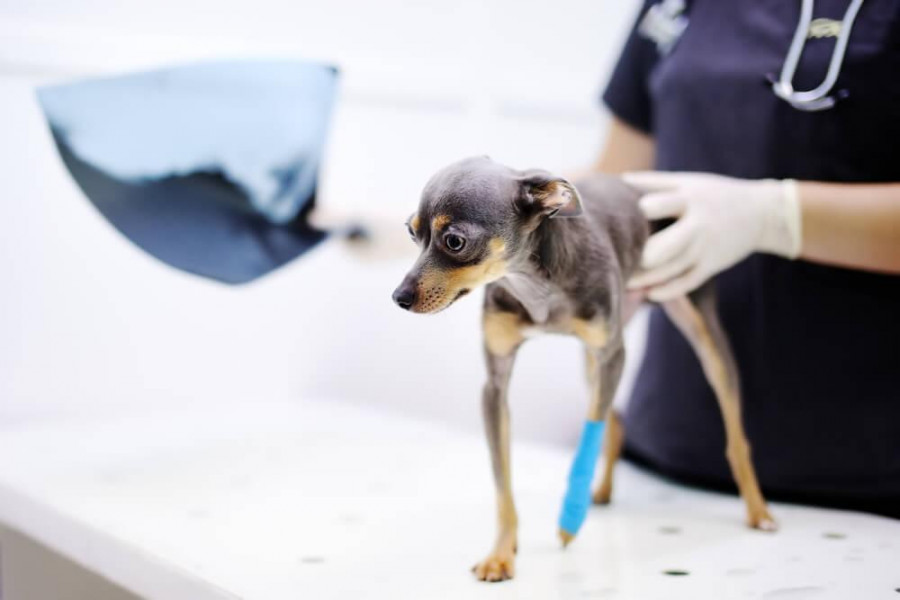Signs of Joint Pain in Your Dog (And a Natural Ways to Ease the Pain!)

It’s easy to forget that our dogs age faster than we do and therefore may start having joint pain from arthritis or dysplasia sooner than we would like. This is especially true for:
· Large breeds
· Very active dogs such those doing agility, herding, flyball, etc.
· Dogs with previous injuries to joint areas
· Dogs with hereditary conditions such as luxating patellas and dysplasia
·Overweight dogs
Even if your dog was very healthy in his younger years, he can still end up with aches and pains as he ages – just like us! And dysplasia can show up in young dogs, so it’s important for all owners to know the signs of joint pain in dogs.
11 Commons Signs of Joint Pain
There are a lot of signs that your dog may display if he has arthritis or dysplasia. These are in no particular order. Your dog may display some or all of these symptoms.
1. Slowing down of movements. He may not run as fast, or take longer to sit or lie down.
2. Difficulty getting into the sit or down position and difficulty getting up from these positions.
3. Trouble going up/down stairs.
4. Unable to jump up (like onto the couch).
5. Limping.
6. The appearance of laziness (your dog may act like he doesn’t want to do anything it will hurt if he does).
7. Crankiness when touched in certain places or made to move in certain ways. Some dogs may show their teeth, growl, bark or even snap to let you know, “That HURTS!”
8. Decreased appetite. If your dog is in a lot of pain, he may not eat much or at all.
9. Hunched back if the arthritis is in the spine.
10. Licking, chewing and biting of places on his body that hurt.
11. Doesn’t settle into a position. While some dogs take a bit to find the right “spot,” all eventually settle down. If your dog just can’t seem to “get comfortable” enough to stop moving and fall asleep, this may be because he can’t find a position that doesn’t hurt his joints. Especially if he is trying to lie on a hard surface.
Without knowing that arthritis could be the culprit, some of these can easily be mistaken for something else, so that’s why it’s important to always do a vet check if you think something is wrong with your dog. For example, you may spend hundreds of dollars with a dog trainer trying to “fix” a dog that’s snapping at you, or you may even surrender him to the shelter when all he needed was some pain meds. He was just trying to tell you he was in pain. Knowing more about how dogs communicate their health can save you time, frustration and money. And, your dog will be happier.
When you do go to the vet, be sure to ask about holistic approaches to managing arthritis. Many people have found natural supplements and changes in diet to really make a difference. The following 3 changes in your dog’s diet can really help alleviate some of the symptoms of joint pain.
First, dogs that are overweight are going to be in more pain, so if your pup is chubby, cut back on that food and try to do some low-stress moderate exercise. Long walks are better for dogs with joint pain than five minutes of sprinting after a ball – hard on those joints! (I like to see 2 to 4 ribs on dogs with joint pain. This really decreases the weight on those sore joints.)
Second, what’s in the food matters. Stay away from grains as they cause inflammation. Look for dog foods that contain cartilage and Omega 3 fatty acids (found in fish oil), which reduce inflammation. Stay Loyal grain free dog food contains all these things to help your dog’s joints, and no grains to inflame them.
Third, add supplements. Two natural supplements that appear to be affective is adding gelatin to your dog’s diet (ask your vet about amount) and bone broth. For the bone broth, you can start with about ¼ cup a meal and add more if needed. We have a great article on how make your own bone broth here.
